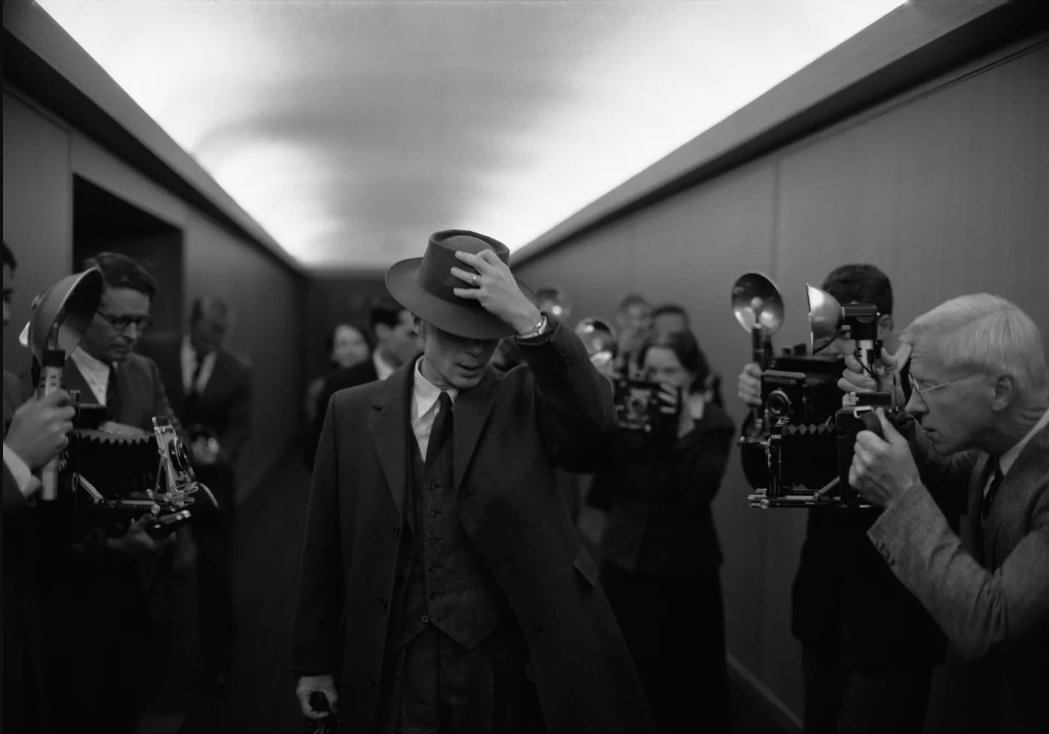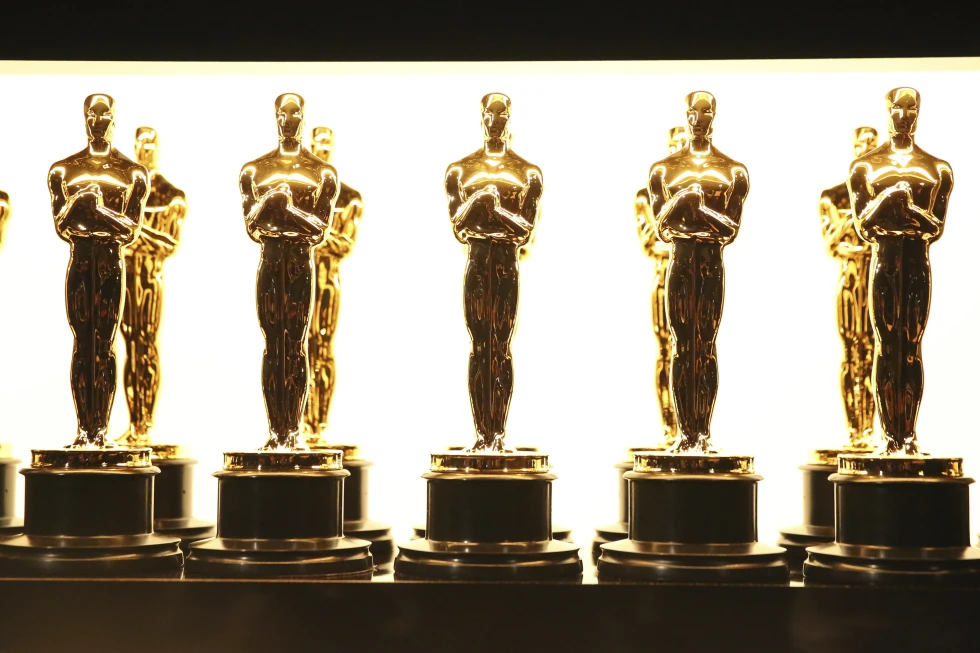There’s a heaviness that comes with the name J. Robert Oppenheimer. The history surrounding the “father of the atomic bomb” holds a weight swollen with guilt and resentment. Yet, “Oppenheimer” is created so intricately, you can see the person behind the fame.
Based on the book “American Prometheus” by Kai Bird and Martin J. Sherwin, “Oppenheimer” is directed by Christopher Nolan. Its release date — July 21, 2023 — was shared with the greatly anticipated “Barbie” to form the “Barbenheimer” phenomenon. “Barbenheimer” was born from the desire to see both movies on the same day — one extreme to the next — and dress in pink and black.
“Oppenheimer” is told in two timelines, one follows the creation of the A-bomb, and the other follows a security clearance trial held after the bomb has been dropped.
Oppenheimer (Cillian Murphy) starts out as an enthusiastic young college student, moving from country to country to study quantum physics — something no one had pursued in the depth Oppenheimer desires. After graduating, he begins teaching a class in that very subject, slowly cultivating a following of interested students.
Eventually, he is approached by Leslie Grove (Matt Damon), a United States Army Corps of Engineers officer, to head a top secret project that could end WWII: The Manhattan Project.
Meanwhile, in the present, a mock trial for Oppenheimer’s security renewal takes place in a room small enough to be a broom closet. The scheme is orchestrated by a long time acquaintance and important atomic-energy advisor, Lewis Strauss (Robert Downey Jr.). Oppenheimer’s clearance is made difficult due to his previous ties to the communist party, and his marriage to a former member.
The combined timelines convey the gravity of The Manhattan Project, opening a realm of thought in viewers. This widely known collaboration is the combined effort of physicists, engineers and scientists from around the world to build the first nuclear bomb. Under Oppenheimer’s direction, they succeed in beating out their competitors and deploying the weapon.
“Oppenheimer” tells two perspectives of the same story, creating an unforgettable rendition of history.
Since the complexity of this topic requires simplification for the average moviegoer (who isn’t a quantum physics scholar), this movie disentangles the science from the plot. This reduction could have ended in a bland, unmotivated story about scientists in the middle of New Mexico, but instead it feeds us just enough information to get by.
The movie does a satisfactory job breaking down the science, but where the film simplifies one aspect, it overcomplicates with a multitude of names. The importance of some names are lost among repetition of unfamiliar ones. This creates a confusion that becomes increasingly muddled during the legal part of the plot.
Though there is some puzzlement with names, every immaculate detail to Oppenheimer’s mental state sharpened the movie. From the foreshadowed pounding on bleachers, to the deliberate placement of silent moments, “Oppenheimer” doesn’t leave anything to chance. These details center the movie on the humanity behind the public’s perception of Oppenheimer.
The movie pays special attention to anxiety symptoms, simulating vision changes with camera focus and an unsteady frame. Overall, the effect produces a sympathy or even relatability with a character never thought to have earned it.
Colors are also consciously incorporated. Present day is highlighted in noir hues, while the sequences building the A-bomb are in full color.
This stark contrast subconsciously conveys that the introduction of the A-bomb only darkens the responsibility of the future, now that the option of using a weapon of mass destruction is available.
In addition to the focus on Oppenheimer’s mental state, the movie’s score is a favorite part of the whole experience. It allows the suspense to cling, building tension steadily with bursts of siren-like wailing that mimic airstrike and bomb threats. Horrifying, yet fascinating, it truly gave me chills — much like the Manhattan Project itself.
As a biographical film, the movie gave us an intimate look into Oppenheimer’s mind. The coordination of timelines and details is a reflection of the man himself — becoming distant with his personal life, immersing himself absolutely in his work. His disregard for his life demonstrates the obsessive nature of a brilliant mind and supports the themes about genius stereotypes.
Ultimately, “Oppenheimer” contrasts the greater good with the sacrifices made to achieve it, and calls into question the integrity of those efforts. “Oppenheimer” acknowledges that the “greater good” is one-sided, and the consequences of this “greater good” are inflicted on innocent civilians.
This greater good, or great evil, however one may view it, comes with guaranteed loss.
As a result, Oppenheimer’s guilt has extended to all of America. This guilt is a secondary blame, historically passed down from the moment that bomb hit the soil.
One that subconsciously kept me from actively seeking out the movie when it was first released.
Maybe it’s just my overly emotional self reflecting on humanity, but I believe this movie was made to understand how vast a gray area can be. How there is no black or white, only consequences.
And when it comes to consequences: Oppenheimer is the grayest of gray.












